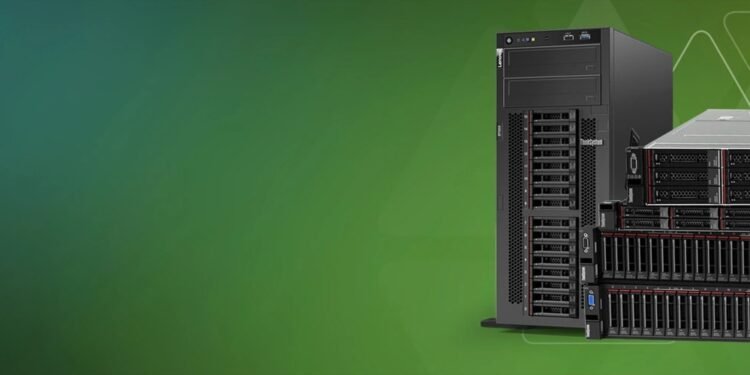The world of server hardware is rapidly changing, bringing innovations and challenges to the forefront. As a business owner or tech enthusiast, you might wonder: What’s next for server technology? How will it impact your organization?
Answer
Advancements in server hardware are unlocking more powerful, efficient, and scalable systems. However, these improvements also bring new challenges, like rising costs and compatibility issues.
So, whether you’re upgrading your data center or planning for future needs, staying updated on the latest trends and obstacles is essential.
In this article, we’ll explore the key innovations shaping server hardware and the challenges that businesses need to tackle to stay ahead in the tech landscape.
1. The Evolution Of Server Hardware
Server hardware has evolved from bulky, power-hungry machines to sleek, efficient designs. Over the years, technological advancements have drastically improved processing power, storage, and energy efficiency. Today’s servers are faster, more reliable, and capable of handling complex workloads.
However, this evolution hasn’t been without its challenges. Older systems often face compatibility issues with newer technologies. Businesses must carefully evaluate their infrastructure to ensure smooth integration of advanced server solutions. Embracing these changes can lead to better performance and reduced operational costs in the long run.
2. Key Innovations Shaping The Future of Servers
- Increased Use of AI in Server Systems
Artificial intelligence is revolutionizing how servers operate. AI-powered servers can analyze data faster, optimize resource allocation, and predict potential failures before they happen. This ensures better uptime and more efficient performance.
- Modular Server Designs
Modular server designs are gaining traction as they allow businesses to scale their systems easily. With these designs, companies can add or replace components like storage and processors without disrupting the entire system.
These systems are made up of individual components, such as processors, storage, and memory, that can be easily swapped out or upgraded without replacing the entire server. This allows businesses to scale their server systems according to their specific needs, whether they are adding more storage space, enhancing processing power, or upgrading to newer technologies.
Carter Survillan says that server room designers agree that your data center shouldn’t be located near exterior walls or windows.
This modular approach not only saves businesses money in the long run but also improves efficiency by allowing systems to be customized based on the unique demands of the organization.
- Cloud-Integrated Servers
Many servers today are built to work seamlessly with cloud environments. This integration offers better flexibility, allowing businesses to scale resources up or down based on demand, ensuring optimal performance and cost efficiency.
3. Challenges In Adopting New Server Hardware
While innovation is exciting, it comes with its own set of challenges. For example, adopting advanced server hardware often requires significant investment. Businesses need to balance the benefits of improved performance with the costs of upgrading.
Another challenge is keeping systems secure. As server technology becomes more advanced, so do the methods hackers use to breach them. Organizations must invest in robust security measures to protect sensitive data and maintain compliance with industry regulations.
4. Benefits Of New Server Innovations
As businesses look to adopt new server technologies, the benefits are clear. New server hardware offers a range of advantages that can significantly improve operations and reduce costs. Below are some key benefits of modern server innovations:
- Better Performance: Modern servers deliver faster processing speeds, making it possible to handle demanding tasks with ease. This improved performance is critical for businesses looking to run data-heavy applications, AI algorithms, and large-scale databases.
- Energy Efficiency: Many modern servers are designed to be energy-efficient, consuming less power while providing the same (or better) performance. This reduction in power consumption not only lowers operational costs but also supports sustainability goals by reducing the company’s carbon footprint.
- Scalability: With modular and cloud-integrated servers, businesses can scale their systems to meet growing demands. This scalability ensures that companies can add resources as needed, allowing them to grow without worrying about system limitations.
- Improved Reliability: AI-powered servers can predict potential failures, preventing downtime before it occurs. This predictive maintenance leads to higher reliability and less costly repairs, ensuring systems remain operational around the clock.
- Enhanced Storage: Modern servers offer larger storage capacities and faster data access, making them better suited for businesses dealing with big data and complex workloads.
5. The Role Of Sustainability In Server Hardware
- Energy-Efficient Technologies
Sustainability is a major focus in server hardware innovations. Modern servers are designed to consume less energy, which reduces both costs and environmental impact.
According to Data Center Solution, traditionally, data centre set points for temperature have been 18 and 21°C (with specific ranges agreed for humidity). However, there has been no meaningful research to align these targets to meet other region’s targets.
- Recycling and Disposal
As part of the sustainability movement, server manufacturers are focusing on recycling old server components. Instead of sending outdated systems to landfills, companies can now recycle parts like hard drives, memory modules, and processors, minimizing electronic waste. This trend helps reduce the environmental impact of discarded tech and supports the circular economy.

- Long-Term Savings
Energy-efficient servers not only reduce power consumption but also lower cooling costs, making them an excellent choice for businesses that want to save money in the long run. These servers are designed to minimize heat generation, reducing the need for additional cooling systems and further cutting down on energy consumption.
Conclusion
The future of server hardware is both exciting and challenging. While innovations like AI, modular designs, rack servers, and cloud integration are transforming the industry, businesses must also address issues like cost, security, and sustainability.
Rack servers, in particular, offer space-saving benefits and enhanced scalability, making them a preferred choice for modern data centers. By staying informed and adapting to these changes, you can ensure your organization remains competitive and efficient.
Whether you’re considering an upgrade or planning your next tech investment, understanding these trends will help you make the right decisions for your business.




